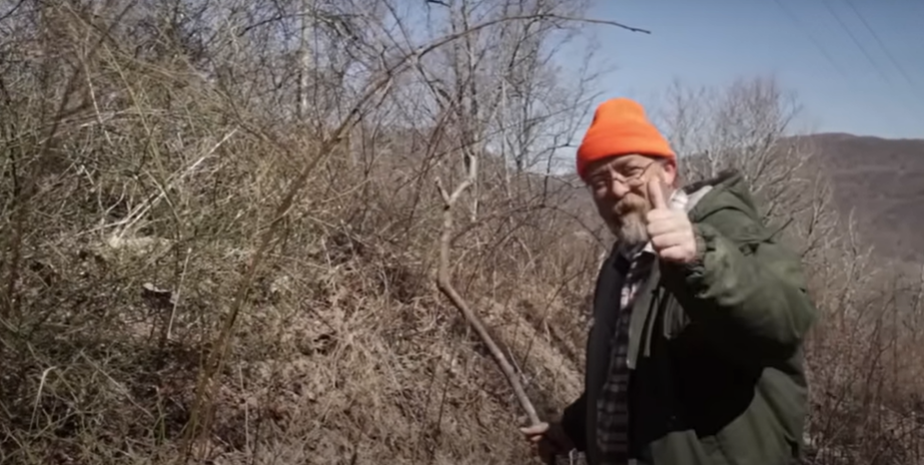This has been a hard one to explain, even to myself. If you don’t follow my blogs or vlogs, let me just say this–I love doing long-distance events. Marathons, ultramarathons, Ironman… I truly love the challenges they pose. But one thing that’s always been a bit weird for me is that I’ve never found any real inspiration in watching others do them. I’m not being ego-full here, just speaking the truth. If I’m on a stationary bike or treadmill I’m watching Gladiator, or maybe The Professional. I love watching other sports like tennis, basketball, even golf (I know, it doesn’t make any sense at all right?), but, besides maybe watching track or the marathon in the Olympics…usually check out when it comes to huge events like Western States, the Hard Rock 100, or the UTMB.
Except for this one race…
When I talk about this race at home, ears get covered usually followed by exclamations of, “Enough already!” I’m sure my friends are sick of hearing about it. I’ve told the kids I’ve coached and their parents about watching the documentary about this race. After they hear me describe it, they usually pull their kids closer and look at me like I’ve got two heads. The number one thing I always say that I love most about this strangely mysterious, viscerally painful (in a fun way of course 😉) event is the fact that only a handful of people have ever finished it. Of course, this doesn’t help my cause and parents will hold their kid a bit tighter, nod, and smile while walking quietly and slowly away.
I’m gonna give you a quick synopsis of the rules, but honestly, if what I say interests you, you can just get online and watch the documentary (I’ll leave at the end for you).
In a nutshell, you have 60 hours to cover about 130 miles of a very hilly course (even though the race director says it’s 100). The elevation amounts to summiting Everest…twice. There are no course markings. Don’t worry, you have a map, well one that you drew up off of a master map in camp. Hopefully you did a good job. And you have to locate books along the course and tear out a page from each that corresponds to your bib number (to prove you stayed ‘on course’). Start time is anytime within a 12 hour window, listen for a conch shell to blow while you’re getting the best, non-anxiety-filled sleep in your life. Once it is blown, hooray! You’ll have one hour until the start and then you’re off!
Now, before you write me off, leave slowly with the quiet smile, or start looking for another self-help blog that just feeds you “be kind and gentle to yourself” (which has its place, really), here’s a list of what I believe is some of the main reasons my heart and mind really sinks into this event…
Define success for yourself. In this race you start to really realize that there’s no finish line. Success is defined by you and only you. If only we knew (and applied) this throughout our entire lives. As I said earlier, in this race there are only a few people who actually make it across the finish line. But that’s not the point. The point is about finding what success is for you. Only you know this.
How much do we ever really explore what it is to be victorious for ourselves? When do we actually ever really validate ourselves? Most of the time, unfortunately, we look for our validation from other people, from places, from some ‘status’ symbols, etc. If I’m honest with myself, a lot of my victories in my racing come from choosing races that, while they are a stretch, I know I could finish if I just train smart enough. How can I ever find out what I can accomplish if I’m only doing things that show me what I can do, instead of finding those that maybe I can’t. Only when we know our actual limits can we know our true capability. And what do we find? We are capable of far more than we think, and, what was once a limit, becomes our new capability!
Growth is in the failure. These people come back. Time after time, people who don’t succeed at this race return to try it again…and again… and again! Think about that for a moment. As the race director points out: ‘…in spite of spectacular failures, these people still have the audacity, the courage to learn from the horror show after their first, third, or eighth attempt at this thing, and most of the time come back even stronger’. It’s not about finishing. It’s about improving. And it’s in our failure (not our success) that we improve. Twisted as that is, it’s in failing, then picking ourselves up, listening to our emotions, watching the mental videotape of what actually happened, and making course corrections to get to the other side, where our “chosen” victories lie. Victories (growth) occur not where a parent, social pressure, or marketing agencies tout will make us happy and content, but in those things we find within and for ourselves.
It’s much easier together than it is to do it alone. Talk about a metaphor for life! Watch these races. Those who try to go it alone for 60 hours will tell you that it would’ve been much easier to do it with others. Most of the people who have finished this race have done so by working together with at least one other ‘seasoned’ racer. You don’t have to make every mistake by yourself. You can actually learn from others’ mistakes. When you’re tired, you can rely on another to do the navigation, the pacing, fill your hydration packs…you name it. From the outside this race looks like it’s all about self-reliance, but part of self-reliance is knowing that you need others in this life. Not just for resources, or as an end to the means, but for camaraderie, for understanding, for empathy, and for objective knowledge into ourselves, so we can learn and grow.
Adaptability: It’s not going to go the way you think. Planning. Training. Preparing yourself mentally, physically, and functionally, all of these are crucial things. That’s not really up for debate when it comes to long distance races (or life), especially when you consider all the things that can go wrong the longer you’re ‘out there’, wherever that is for you. But the entire process and purpose of this race, from the minute you decide to try and enter, to the moment you actually get out on the course is a lesson in, “Well, that’s not going to work, now what?” Forget about the race clock ticking, and the sheer physical brutality of being on course–try managing it when you are on your mental and emotional heels. Your ability to adapt, change, and redirect your resources over and over, while keeping a somewhat level head about you needs to be operating way past the race’s 60 hours. Bruce Lee’s famous “Be Water” quote is echoed in every minute you’re strapped into this ride, and, really, we are always buckled in. Follow the rules, stick to the plan, trust your map and compass, until it’s time not to. Success is fluid, you should be too.
“Empty your mind. Be formless, shapeless, like water. You put water into a cup, it becomes the cup. You put water into a bottle, it becomes the bottle. You put it into a teapot, it becomes the teapot. Now water can flow, or it can crash. Be water, my friend.” Bruce Lee
An education in emotions. When we’re kids our emotions change a lot more frequently throughout the day than when we’re adults. We learn (hopefully) through difficult and painful experiences, through loss, hurt, physical and emotional discomfort, how to manage our emotions. Identify what’s going on for us. How to use them, process them (when to distance ourselves from them and process them later if the situation calls for it… it sometimes does), learn from them, even how to create the ones that will help us… I can go on, but you get the point. You see the gamut in this race, boy! Frustration over going off course and losing eight minutes you didn’t have. Whopping anxiety over how you’re going to fare after eating something that doesn’t agree with you and not finding out until it’s, well…inconvenient. Self condemnation because you forgot crucial gear, food, etc. minutes after you leave the gate (you cannot go back and restock after you leave for another loop). A cocktail of piercing loneliness and fear because the group you’ve been running with (at night, in the fog) has gotten ahead of you and now you’re on your own…for hours. There’s so many other things I’m sure that can and do bring about the strongest of uncomfortable emotions in this thing, and watching these courageous racers regulate, listen to, get overwhelmed by, and silence, when needed, their emotions is nothing short of truly inspiring.
Races can help us experience the things I’ve mentioned that this horrifically inspirational and difficult event does. Everyone’s choice of mental-emotional training dojo is different, but I hope you can see at least some of the things you are looking for in the challenges you choose, and, unfortunately, even in the ones you don’t.
For me, choice in the face of inhospitable environments (internal, external, or most likely both) is crucial for me to have a sense of freedom in my life. And freedom is never free, if it’s the real thing. So, I look for challenges to find that freedom in everything now, not just in races. Connecting with others that I might not find connection with from the get go, doing the laundry when I say I will (I never want to, who does?).
The challenge is finding a perspective that lets me succeed in a hard situation, owning what’s important to me, and not being too concerned about what others think. Taking failures a little bit more eloquently on the chin (hopefully) and learning from them. Connecting with those around who can help me and who I can help to make our journeys easier, and frankly better. Having a script for how I want things to go and being flexible enough to change it when the situation calls for it. And lastly…identifying, understanding, and using my emotions as advisors when necessary, and, if they get too loud or overbearing? Override them with the solemn promise to process them with myself when the moment allows. Buddhist texts, watching others in this race of races, and my own life has taught me that, although I know it is futile to expect perfection and I will continuously fail, I vow to give my best effort.
Oh right, the race, here you go: The Barkley Marathons.
Enjoy! Or just let me know what you think, however it goes for you.
If you would like to learn tools and skills to help you improve your emotional aptitude, reduce your emotional isolation, lessen your avoidance of shame, fear, and anxiety, and enable yourself to reach your goals, break old habits, or create new ones, I can help. I provide emotional resilience coaching, so you can achieve your goals. We can meet either virtually or in person at my office in Waterbury, Vermont. Just click the button or the link below for a free consultation and let’s talk.
Click to Select a Date & Time for your free consultation.




